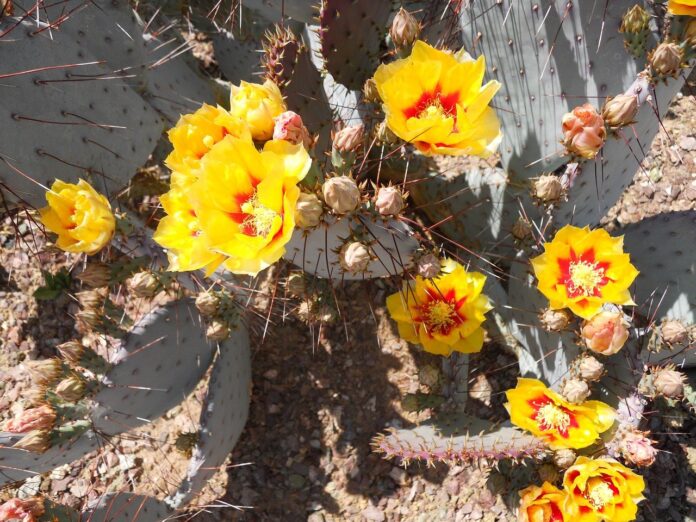When I’m walking through the woods or along the edges of the crop fields around my home I often ponder the uses of the plants that grow naturally in my own backyard.
This curiosity started during childhood when my mom’s friend told her spotted jewelweed is the best cure for poison ivy rash. I never spent another summer waiting endlessly for the inevitable, itchy, weepy rash to dry up. The sap from the plant’s stems and leaves dried up my poison ivy blisters within days.
I credit that success with my continued interest in botany, foraging and home remedies. It makes sense that the cures for everyday ailments could be found growing wild. After all, there wasn’t always a drugstore right down the road.
Prickly pear, wild rose and wild peach trees have properties that make them ideal for treating sunburn. Learn where and when to forage for these plants and how to prepare them to soothe burns.
Prickly Pear
The inner core of prickly pear pads and fruits possesses cooling and astringent qualities, similar to aloe, which are helpful for skin healing and burn relief.
Where to find prickly pears
Prickly pear grows in colonies that spread across disturbed sandy and rocky soils in south-facing, sunny locations.
There are prickly pear colonies located throughout southern Ohio and the counties that border the western side of Lake Erie. In western Pennsylvania, it can be found in Allegheny County.
When to harvest prickly pears
Prickly pear pads can be harvested throughout the growing season when they are green and firm. Fruits should be harvested when they are brightly colored and succulent before the plant starts to die back in late fall.
Wear leather gloves to harvest prickly pear as both the pads and fruit are covered in large and tiny spines that will stick into your skin or fabric gloves. It’s also best to store your harvest in a paper bag rather than a cloth one.
How to use prickly pears to treat sunburn
Carefully, remove the spines from a prickly pear pad or fruit and peel the outer skin off. Apply the peeled skin to sunburn and cover with a cool damp cloth.
Wild Rose
Wild rose petals and leaves have astringent properties that work well in topical applications to treat burns and wet and weepy rashes and wounds.
Where to find wild roses
Wild roses can be found growing disturbed and rocky soils along woodland edges and near bodies of water.
When to harvest from wild rose bushes
Wild rose flowers should be harvested from healthy plants only during summer. You can snip the blossoms off with pruning sheers or scissors. Their leaves can be harvested at any time during the growing season. They can be used fresh or dry to prepare a topical wash.
How to use wild rose to treat sunburn
Rose petals can be used in a vinegar infusion with calendula flowers to soothe sunburns, kitchen burns and poison ivy rashes.
Ingredients
- 2 cups raw apple cider vinegar
- 4 tablespoons fresh or dry rose petals
- 2 tablespoons fresh or dry calendula flowers
Steps
- Combine ingredients in a quart jar and allow the mixture to sit for two weeks in the refrigerator.
- Strain the mixture and store it in the refrigerator for up to six months. The infusion can be used as a wash or skin soak for burns or applied with a spray bottle to relieve sunburn.
Wild Peach

The flowers, leaves and immature twigs of wild peach trees can be used to make a topical wash to cool burns, soothe poison ivy rash and insect bites and dry up wet, weepy wounds.
Where to find wild peach trees
Wild peach trees typically grow along the sunny edges of woodlots and along trails. Wild peach trees can also be the remnants of old orchards or homesteads.
When to harvest from wild peach trees
Wild peach flowers, leaves and young twigs should be harvested in mid-spring and used fresh or dried for later use. However, the fruit ripens during summer and can be harvested through fall.
How to use wild peach to treat sunburn
Peach leaves, petals and twigs can be used to make a vinegar infusion to soothe burns and rashes.
Ingredients
- 1 part fresh leaves, petals and twigs chopped
- 2 parts raw apple cider vinegar
Steps
- Combine ingredients in a quart jar and allow the mixture to sit for two weeks in the refrigerator.
- Strain the mixture and store it in the refrigerator for up to six months. The infusion can be used as a wash or skin soak for burns or applied with a spray bottle to relieve sunburn, rashes and insect bites.













